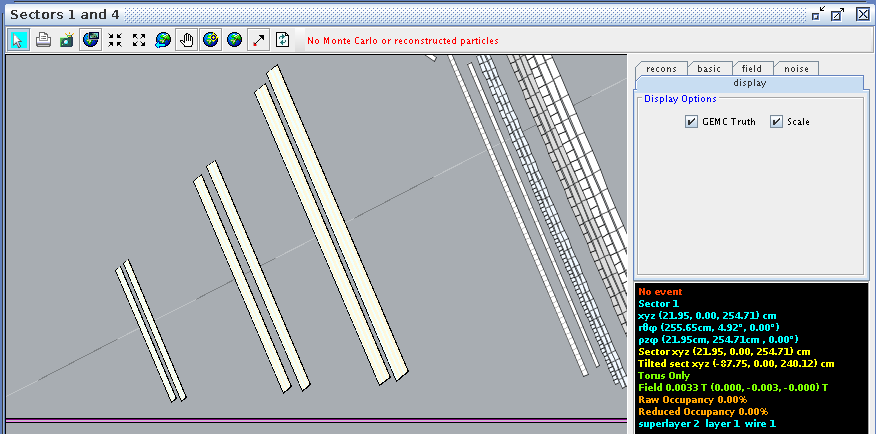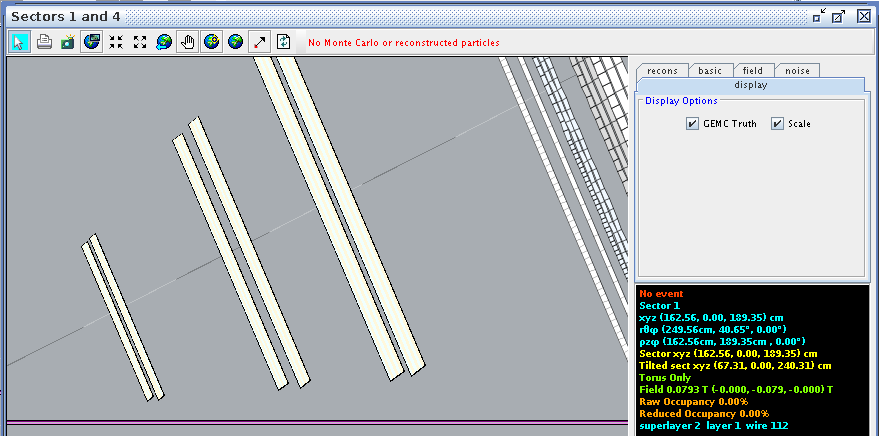Difference between revisions of "DC hits to Moller XSection"
| Line 5: | Line 5: | ||
Examing the CM Frame Theta angles which correspond to Lab frame angles within 5-40 degrees (with bin widths of 1 degree), for only on degree in Phi (0 degrees). For each degree in Theta in the Lab frame, the correct kinematic variables are written to a LUND file 1000 times. These events are read from the evio file using | Examing the CM Frame Theta angles which correspond to Lab frame angles within 5-40 degrees (with bin widths of 1 degree), for only on degree in Phi (0 degrees). For each degree in Theta in the Lab frame, the correct kinematic variables are written to a LUND file 1000 times. These events are read from the evio file using | ||
| − | <center>[[File:MolThetaCM_unweighted.png]]</center> | + | <center>[[File:MolThetaCM_unweighted.png]][[File:MolThetaLab_unweighted.png]]</center> |
The Moller Scattering angle Theta is read from the LUND file, it's weight applied, and it's weight adjusted by dividing by the number it was multiplied by (1000) to give a differential cross-section for one electron. This is plotted against the theoretical differential cross-section for one Moller electron. | The Moller Scattering angle Theta is read from the LUND file, it's weight applied, and it's weight adjusted by dividing by the number it was multiplied by (1000) to give a differential cross-section for one electron. This is plotted against the theoretical differential cross-section for one Moller electron. | ||
Revision as of 16:38, 1 November 2016
Verification using LUND and evio files
The LUND files are broken into 1000 events per file due to the simulation limits of GEMC. Once the LUND file is used in the GEMC simulation an evio file with 1000 events is created. Since only the LUND file contains the weighting factor, both the LUND and evio files are read simultaneously. This simultaneous reading implies that the LUND event corresponds with the generated particle data in the evio file. Relativistically, for particles that travel along the beam line, this dimension is Lorentz compressed. As the angle of the particle approaches a direction perpendicular to the beam line, this compression decreases since the relativistic component decreases. This implies that the number of events that occur in the lab frame of reference near the beam line is larger than the number as it approaches a perpendicular direction. To understand the "density" of the number of events per bins in the lab frame, a study of 1000 events in the center of mass frame per 1 degree in the lab frame is investigated.
1000 events per degree of 5 to 40 degrees in the Lab Frame
Examing the CM Frame Theta angles which correspond to Lab frame angles within 5-40 degrees (with bin widths of 1 degree), for only on degree in Phi (0 degrees). For each degree in Theta in the Lab frame, the correct kinematic variables are written to a LUND file 1000 times. These events are read from the evio file using
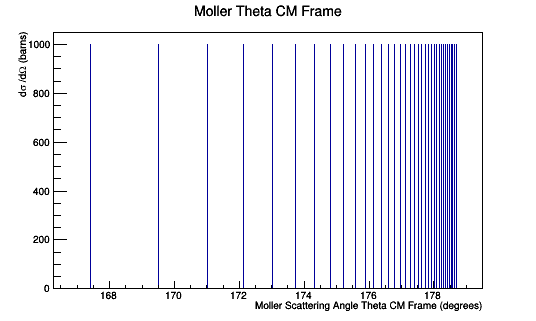
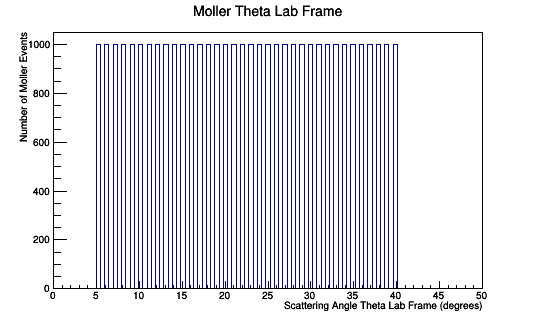
The Moller Scattering angle Theta is read from the LUND file, it's weight applied, and it's weight adjusted by dividing by the number it was multiplied by (1000) to give a differential cross-section for one electron. This is plotted against the theoretical differential cross-section for one Moller electron.
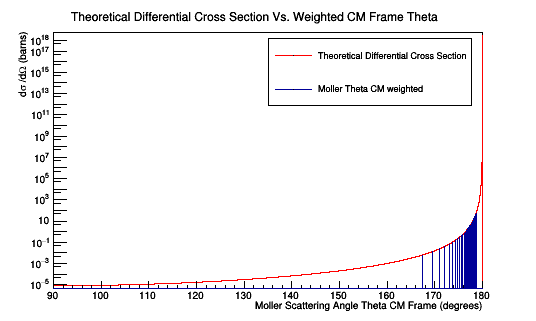
From the evio file, a histogram can be constructed that will only record the Moller events which result in hits in the drift chamber. A hit for this setting is the procID=90
Plotting the Moller scattering angle Theta in the Center of Mass frame just for on occurance of the CM angle gives the Moller Differential Cross-section.
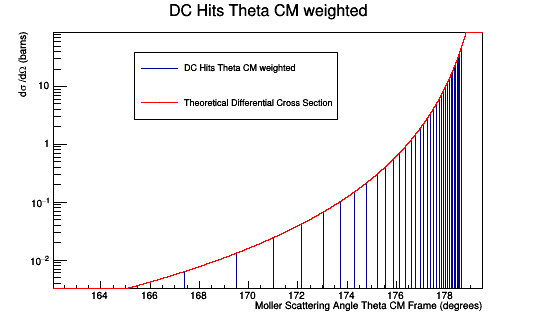
Adjusting the weight by the number of times the specific angle caused hits. We should recover the Moller differential cross-section as found previously.
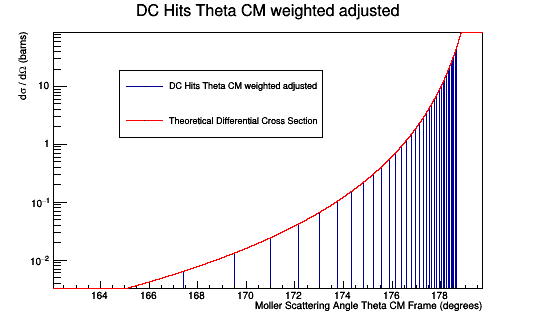
Once the validity of the Moller differential cross-section is established, we can transform from the center of mass to the lab frame as shown earlier. Since the detector is in the lab frame, the hits collected will have to be used to compose a histogram for the Moller scattering angle in the lab frame. We can show that the Moller events that register as hits in the lab matches the Moller differential cross-section in the lab.
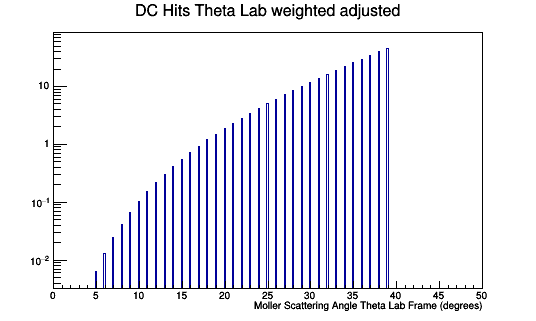
Isotropic Spread in CM Frame for 5-40 degrees in Lab
As was done for the situation of 1000 events per degree in the lab frame of reference, the isotropic distribution of scattering angle theta in the center of mass frame can be weighted to reproduce a Moller differential cross-section.
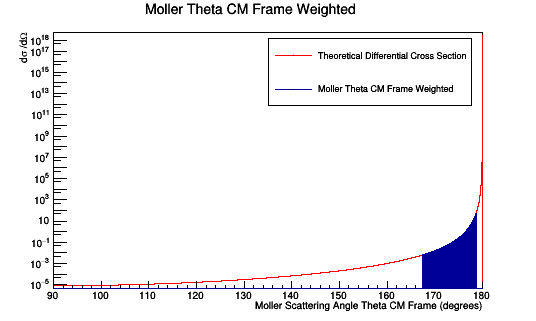
Similarly, as was done earlier, the center of mass frame is transfered to the lab frame.
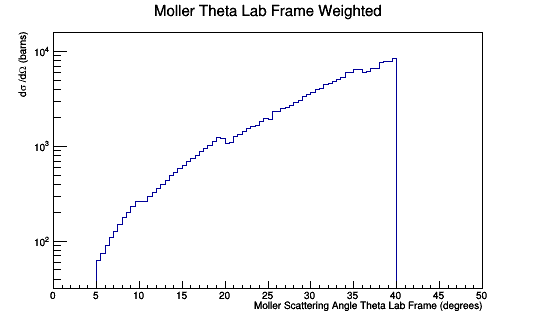
Since the dimension parallel to the direction of motion "compresses" with speeds approaching the speed of light, the number of events that occur at 5 degrees are different than 40 degrees. Collecting the number of events that occur within 0.5 degree bin width.
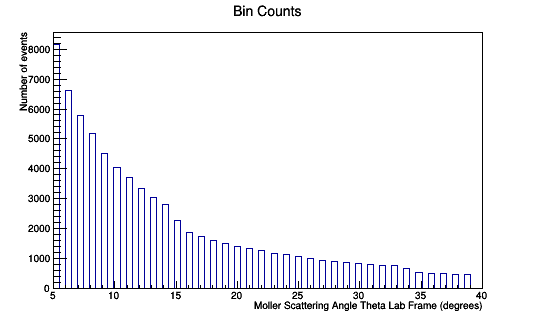
This can be plotted by dividing each entry into the bin by the number of events per that bin and multiplying by the corresponding weight factor.
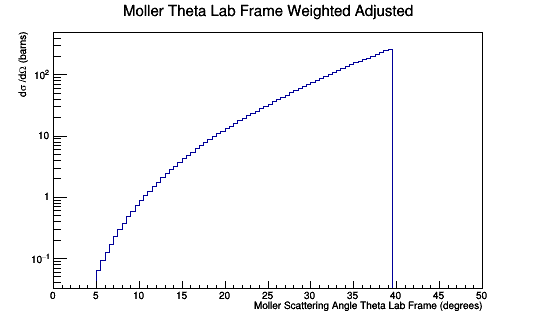
Determining wire-theta correspondance
To associate the hits with the Moller scattering angle theta, the occupancy plots of the drift chamber hits by means of wire numbers and layer must be translated using the physical constraints of the detector. Using the data released for the DC:
DC: Drift Chambers(specs)
This gives the detector with a working range of 5 to 40 degrees in Theta for the lab frame, with a resolution of 1m radian.
This sets the lower limit:
This sets the upper limit:
Taking the difference,
Dividing by 112, we find
CED Verification
Using CED to verify the angle and wire correlation,
Super Layer 1:Layer 1
For a hit at layer 1, wire 1 we find the corresponding angle theta in the lab frame to be 4.91 degrees
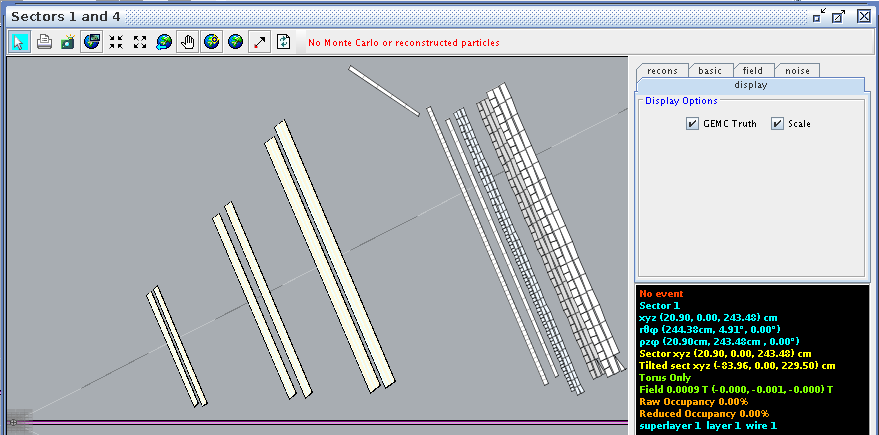
For a hit at layer 1, wire 2 we find the corresponding angle theta in the lab frame to be 5.19 degrees
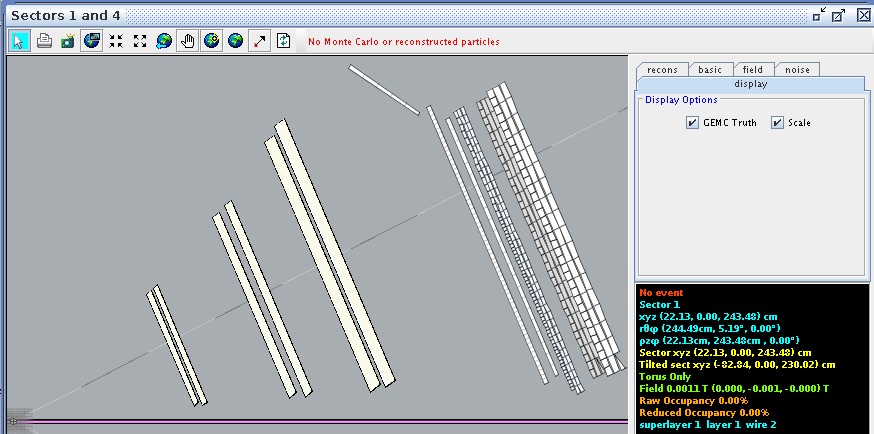
Finding the difference between the two wires,
Examing a hit at layer 1, wire 112 we find the corresponding angle theta in the lab frame to be 40.70 degrees
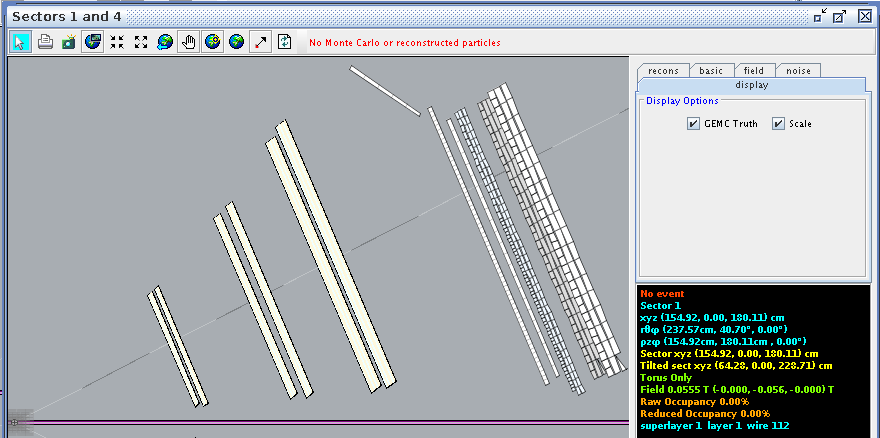
This sets the lower limit:
This sets the upper limit:
Taking the difference,
Dividing by 112, we find
Noting the difference from the spacing for a single cell, to the entire detector layer
An uncertainty of this magnitude in radians corresponds to an angular uncertainty of
Testing this for a random angle, 78 degrees we find
Adding this to the starting angle of 4.91 degrees
Comparing this to CED at wire 78
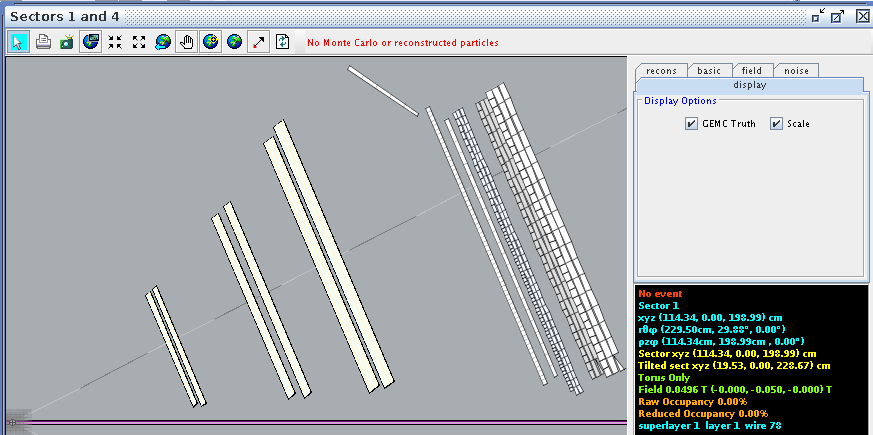
Super Layer 1:Layer 2
For a hit at layer 2, wire 1 we find the corresponding angle theta in the lab frame to be 5.00 degrees
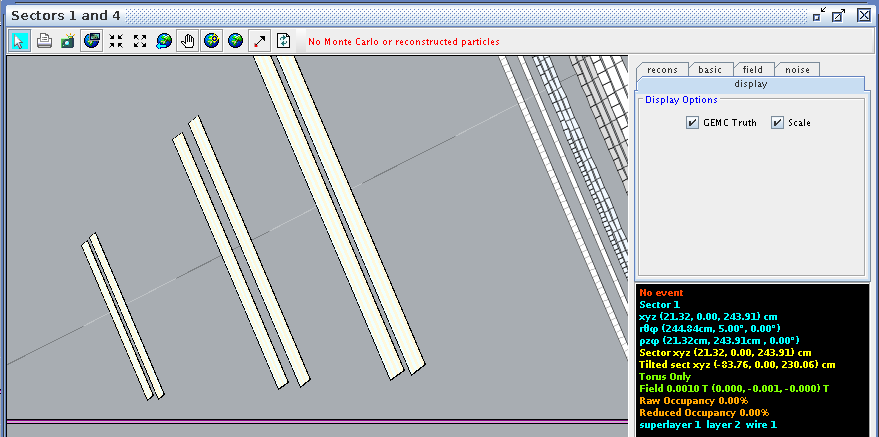
Examing a hit at layer 2, wire 112 we find the corresponding angle theta in the lab frame to be 41.05 degrees
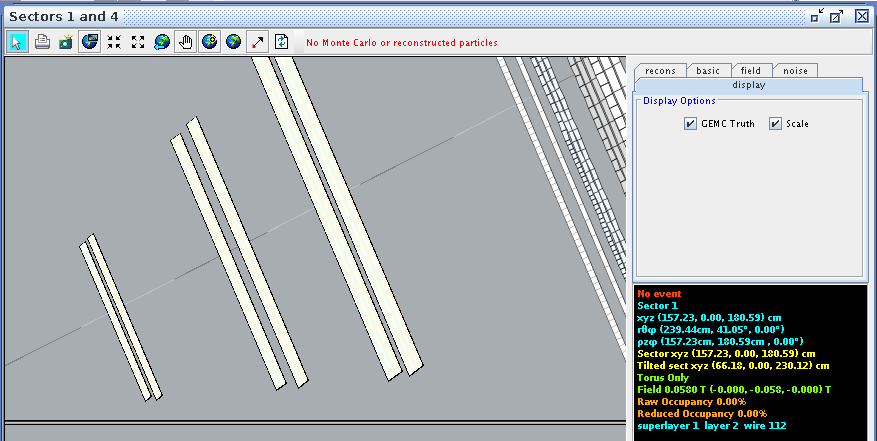
This sets the lower limit:
This sets the upper limit:
Taking the difference,
Dividing by 112, we find
Super Layer 1:Layer 6
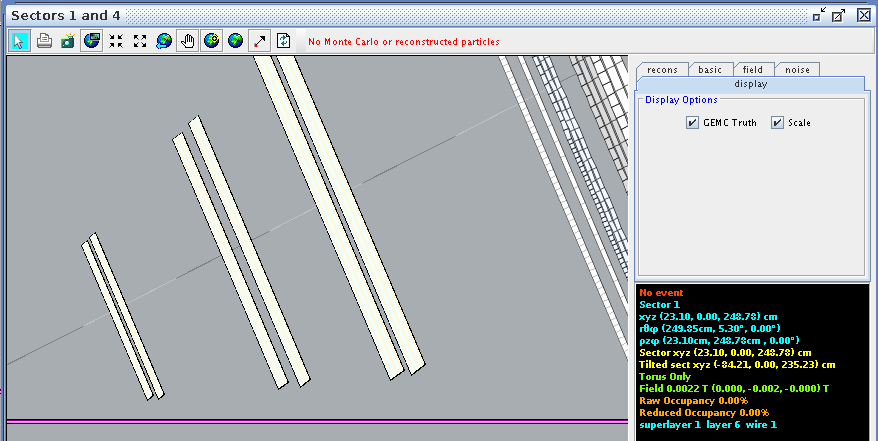
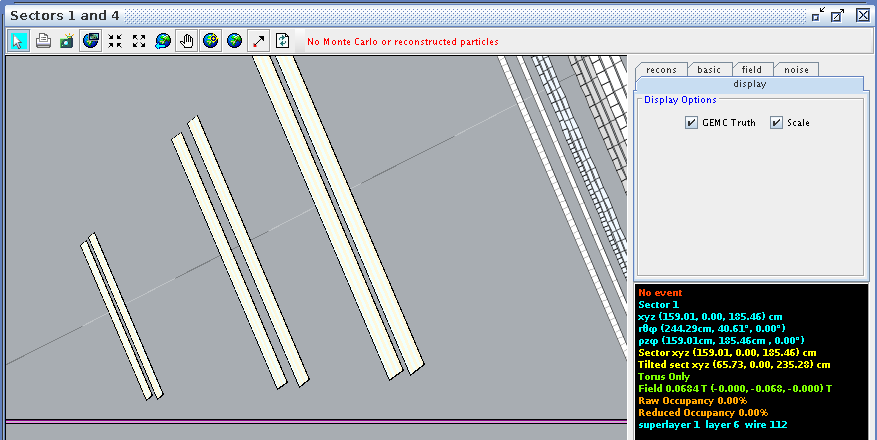
Superlayer 2:Layer 1
